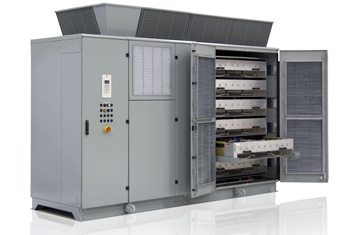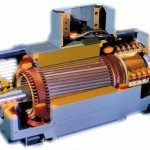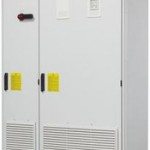Variable Frequency Drives for Wastewater
The flow and pressure of fans and pumps need to be controlled because water consumption varies during a day.The flow and pressure can be adjusted either electrically with variable speed drives or mechanically with fixed-speed solutions such as inlet guide vanes, throttling valves or hydraulic couplings. The most common flow control method is by means of a fixed speed motor regulated with a valve. This method can be compared to adjusting the speed of a car by braking while keeping the foot on the gas pedal. This technique doesn’t only waste a tremendous amount of energy, it also wears out the equipment. With variable frequency drives, changing the flow is achieved by adjusting the motor speed which can be compared to reducing the speed by taking the foot on the gas pedal and switching the automobile into lower gear. Wastewater pumps are operated at best efficiency point under all operating conditions when using a variable frequency drive with the application. Variable speed drives are the most efficient control method because they save energy and they decrease water emissions while minimizing total operating costs.
Variable frequency drives can also reduce maintenance overhead at waste water plants by acting as soft starters when applied to electric motors; because they reduce the stress on bearings, motor windings, housings and other equipment. The variable frequency drive progressively increases the motor speed and accelerates the corresponding load to the rated RPM of the motor. When sized correctly, one variable frequency drive can be setup to operate several wastewater pumps in sequence.
Using a variable frequency drive for soft starting electric motors eliminates high starting currents and voltage dips that normally would cause breakers to trip on overload fault. When a wastewater pump is turned off or if the water demand is reduced, a variable frequency drive can slowly reduce the speed of the pump to avoid water hammering, stress on pumping equipment and electric motor parts, resulting in an extended lifetime of wastewater pumps and electric motors. A pump running at half its rated RPM consumes as little as one eighth of the energy compared to a pump running at full rated RPM.Wastewater pumps usually operate at partial load so a huge potential in energy savings can be achieved by controlling a pump’s RPM with a variable frequency drive. Applying a variable frequency drive to wastewater pumps instead of operating across the line, an energy bill can be reduced by as much as 60 percent and this consequently helps to reduce water emissions.
ABB Drive Solutions for Wastewater Pumps
 The ABB ACS 2000 ULH direct-to-line configuration combines the cost savings of a variable speed drive systems without using a transformer and features the benefits of a voltage source inverter, including excellent availability, reliability, and high, constant power factor with superior control performance.
The ABB ACS 2000 ULH direct-to-line configuration combines the cost savings of a variable speed drive systems without using a transformer and features the benefits of a voltage source inverter, including excellent availability, reliability, and high, constant power factor with superior control performance.
The ABB ACS 2000 drive features an active front end combined with multiple levels of control. The result is an ultra-low harmonic design that minimizes line harmonics without the use of expensive, custom transformers. The ABB ACS 2000 also includes a smaller, lighter weight packaged product to minimize the overall space required in the maintenance room while reducing shipping and installation costs.
Power ratings of the ABB ACS 2000 series drives range from 400 kVA through 300 kVA to 2000 horsepower.and 4.16 kV, 6.0 kV to 6.9 kV. The ABB ACS 2000 series drive is commonly used on influent, effluent pumps, aeration blowers, cooling fans, intake pumps and other related wastewater equipment.
To learn more about the ABB ACS 2000 series drive, please visit the ABB Website.
Information References:









